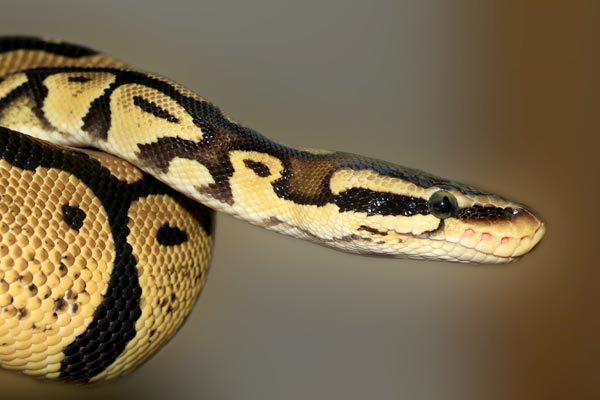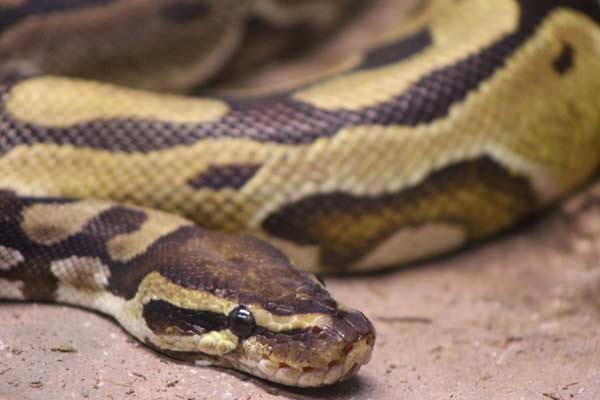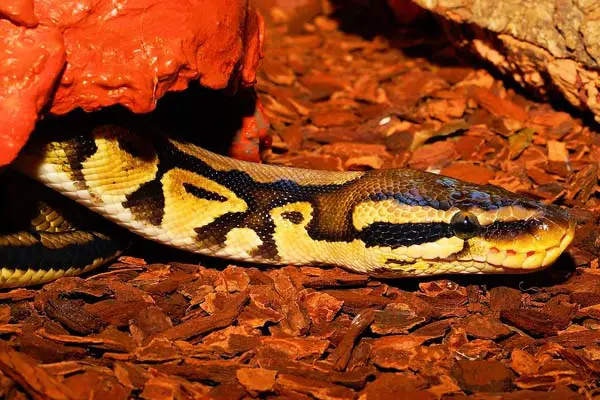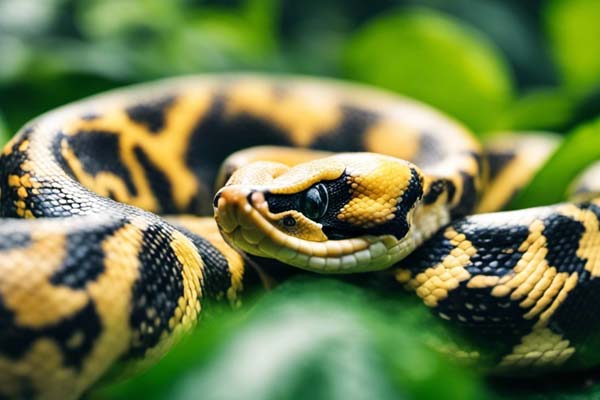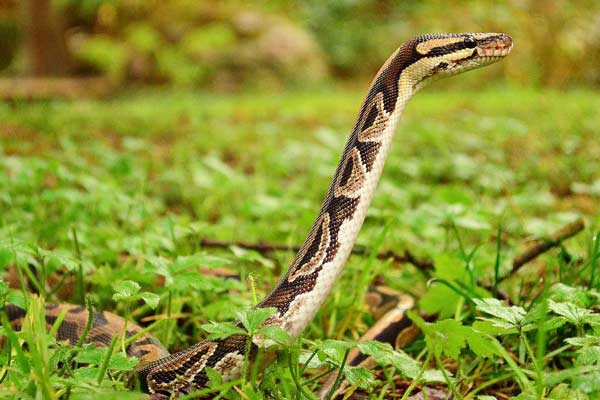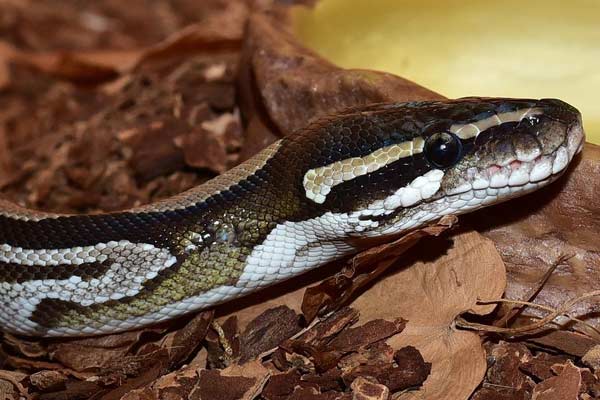Can Ball Pythons Eat Rabbits? Everything You Need to Know
Ball pythons are popular pet snakes that require a well-balanced diet to thrive. While they primarily feed on rodents in the wild, many pet owners wonder if ball pythons can eat rabbits. The answer is yes, ball pythons can eat rabbits, but it’s essential to understand the risks and benefits of feeding them this type of prey.
In general, ball pythons can only eat rabbits that are appropriate in size for their age and breed. Following the recommended snake-feeder ratio is also crucial, typically 10-15% of the snake’s body weight. While rabbits can provide a nutritious meal for ball pythons, they are unsuitable for all snakes and should only be fed under certain circumstances.
Can Ball Pythons Eat Rabbits?
Ball pythons are carnivorous and can eat prey, including mice, rats, hamsters, guinea pigs, rabbits, and gerbils. However, whether ball pythons can eat rabbits is a bit more complicated.
Young and small rabbits can be fed to ball pythons in captivity. However, adult rabbits must be avoided. In general, ball pythons can only eat rabbits in sizes that fit them, which will depend on the age and breed of the rabbit. It is important to note that rabbits are not a natural prey item for ball pythons in the wild.
Feeding rabbits to ball pythons can have some benefits. Rabbits are leaner and have a higher protein percentage in calorie intake compared to other rodents. This means feeding rabbits to an obese ball python can result in it losing some weight. Additionally, rabbits are relatively easy to find and purchase in most areas.
However, feeding rabbits to ball pythons also has some potential drawbacks. Rabbits have a higher bone density than other rodents, making them more difficult for ball pythons to digest. Additionally, rabbits are prey animals and can carry diseases or parasites that can harm ball pythons.
In general, it is recommended to feed ball pythons a diet consisting primarily of rodents, including mice, rats, and gerbils. These prey items are easier for ball pythons to digest and provide nutrients for their overall health and well-being. When opting to feed rabbits to your ball python, moderation is key, and choosing rabbits that are properly sized for your snake is essential.
Nutritional Considerations
When considering feeding rabbits to ball pythons, it is vital to consider the snake’s nutritional requirements. Ball pythons are obligate carnivores, which means that they require a diet consisting solely of animal protein. A balanced diet for ball pythons should include all essential nutrients, including protein, fat, vitamins, and minerals.
Critical Nutrients Needed for Ball Pythons
Protein is the most critical nutrient for ball pythons, as it is needed for growth, tissue repair, and overall health. A diet that is too low in protein can lead to stunted growth, poor immune function, and other health problems. Fat is also crucial for ball pythons, as it provides energy and helps to maintain healthy skin and scales.
Prey Size and Type Considerations
The prey size and type must be carefully considered when feeding ball pythons. Rabbits can be a suitable prey item for ball pythons, but choosing a size appropriate for the snake’s age and size is vital. Young rabbits weighing 150-200 g are generally suitable for ball pythons. It is also important to note that ball pythons can eat rabbits as live, pre-killed, or frozen-thawed feeders.
Comparing Rabbit Nutrition to Ball Python Requirements
While rabbits can be a viable food source for ball pythons, it is essential to note that the nutrition provided by feeder rodents may be inferior to the nutrition provided by the prey that ball pythons would consume in the wild. Ensuring the ball python’s diet balances and provides all the essential nutrients for optimal health is vital.
Risks and Benefits of Feeding Rabbits
Feeding rabbits to ball pythons can have both potential risks and benefits. Here are some of the most important things to consider:
Potential Risks Associated with Feeding Rabbits
Feeding rabbits to ball pythons has inherent risks that must be considered. These include:
- Bacterial infections: Rabbits can carry bacteria such as salmonella, which can cause infections in ball pythons and their owners.
- Parasites: Rabbits can also carry parasites such as mites and ticks, which can infect ball pythons and cause health problems.
- Obesity: While rabbits are a good source of lean protein, they also have a high-calorie count. Feeding too many rabbits to a ball python can result in the snake becoming overweight or obese.
- Allergic reactions: Some ball pythons may be allergic to rabbit meat, which can cause skin irritation, respiratory problems, and other health issues.
Benefits of Feeding Rabbits to Ball Pythons
Despite the potential risks, there are also some benefits to feeding rabbits to ball pythons. These include:
- Lean protein: Rabbits are a good source of lean protein, which can help keep ball pythons healthy and strong.
- Weight loss: If a ball python is overweight or obese, feeding it rabbits can help it lose weight and become healthier.
- Variety: Feeding rabbits to ball pythons can provide some variety in their diet, which can help prevent boredom and encourage healthy eating habits.
Alternatives to Feeding Rabbits
While rabbits can be a good source of lean protein for ball pythons, several alternative prey items can provide a balanced diet for your pet snake. Here are some recommended alternatives to feeding rabbits to ball pythons:
- Rodents
Rodents are the most common prey item for ball pythons and are readily available in most pet stores. Mice and rats are suitable options and come in various sizes to accommodate different snake sizes. However, it’s crucial to ensure that the rodents are appropriately sized for your snake to prevent choking or other health issues.
- Fish
Fish can serve as an excellent protein and omega-3 fatty acid source for ball pythons. However, avoiding feeding your snake fish high in mercury, such as tuna, is essential. Suitable options include small fish like goldfish or guppies.
- Amphibians
Like frogs and toads, Amphibians can also be prey for ball pythons. However, it is crucial to avoid feeding your snake wild-caught amphibians as they may carry parasites or diseases. Instead, opt for captive-bred options from reputable breeders.
- Eggs
Eggs can provide ball pythons with valuable protein and essential nutrients, making them a beneficial dietary option. However, it’s crucial to ensure that the eggs are cooked before feeding to prevent the risk of salmonella.
- Quail
Quail can be an excellent alternative to feeding rabbits as they are a good source of lean protein. However, they can be more challenging to find and may be more expensive than rodents.
When feeding alternative prey items, it’s crucial to ensure that your snake is still receiving a balanced diet. It’s recommended to vary the prey items to provide a range of nutrients and avoid overfeeding. Additionally, it’s vital to ensure that the prey items are appropriately sized for your snake to prevent choking or other health issues.
Proper Feeding Techniques
When feeding a ball python, it is essential to follow proper feeding techniques to ensure the snake’s health and well-being. Here are some guidelines to follow:
Prey size guidelines and feeding frequency
Ball pythons can eat a variety of prey items, including mice, rats, chicks, and rabbits. When selecting prey, choosing a size appropriate for the snake’s size is vital. Generally, the prey item should be no larger than the widest part of the snake’s body.
Feeding frequency depends on the snake’s age and size. Younger snakes should be fed more frequently than adult snakes. A good rule of thumb is to feed a young snake every 5-7 days, while an adult snake can be fed every 7-10 days.
Monitoring feeding behavior and health indicators
It is crucial to monitor the snake’s feeding behavior and health indicators. A healthy snake will have a good appetite, shed regularly, and have clear eyes and skin. If a snake appears lethargic, has difficulty shedding, or has other health concerns, it is essential to consult a veterinarian.
Feeding chart and schedule
Keeping a feeding chart and schedule can help ensure that the snake receives proper nutrition and that feeding is consistent. A feeding chart should include the date, prey item, size of prey, and any notes on feeding behavior or health concerns.
Temperature and humidity
Proper temperature and humidity are essential for the snake’s digestion and overall health. The enclosure should have a temperature gradient, with warm and cool sides. The warm side should be between 88-92°F, while the cool side should be between 75-80°F. Humidity should be kept between 50-60%.
Weighing and overfeeding
Monitoring the snake’s weight is crucial to ensure healthy growth and prevent overfeeding. Overfeeding can result in obesity and various health issues. As a general guideline, feeding the snake a prey item that amounts to 10-15% of its body weight is recommended.
Pre-killed and frozen prey
Pre-killed and frozen prey can be used to feed a ball python. Pre-killed prey should be fresh and not left in the enclosure for more than a few hours. Frozen prey should be thawed and warmed to room temperature before feeding.
Following proper feeding techniques, a ball python can thrive and live a healthy and happy life.
Conclusion
Feeding rabbits to ball pythons should be carefully considered due to potential drawbacks and benefits. While rabbits offer lean protein, which can benefit overweight pythons, there are associated risks.
Ball pythons can be selective eaters, and a high-fat diet can lead to health issues. It is important to ensure the rabbit is suitable for the snake’s size, as adult pythons may prefer smaller prey like mice or rats.


